West Hartford Will Launch Test of Organics Recycling Program

Audio By Carbonatix
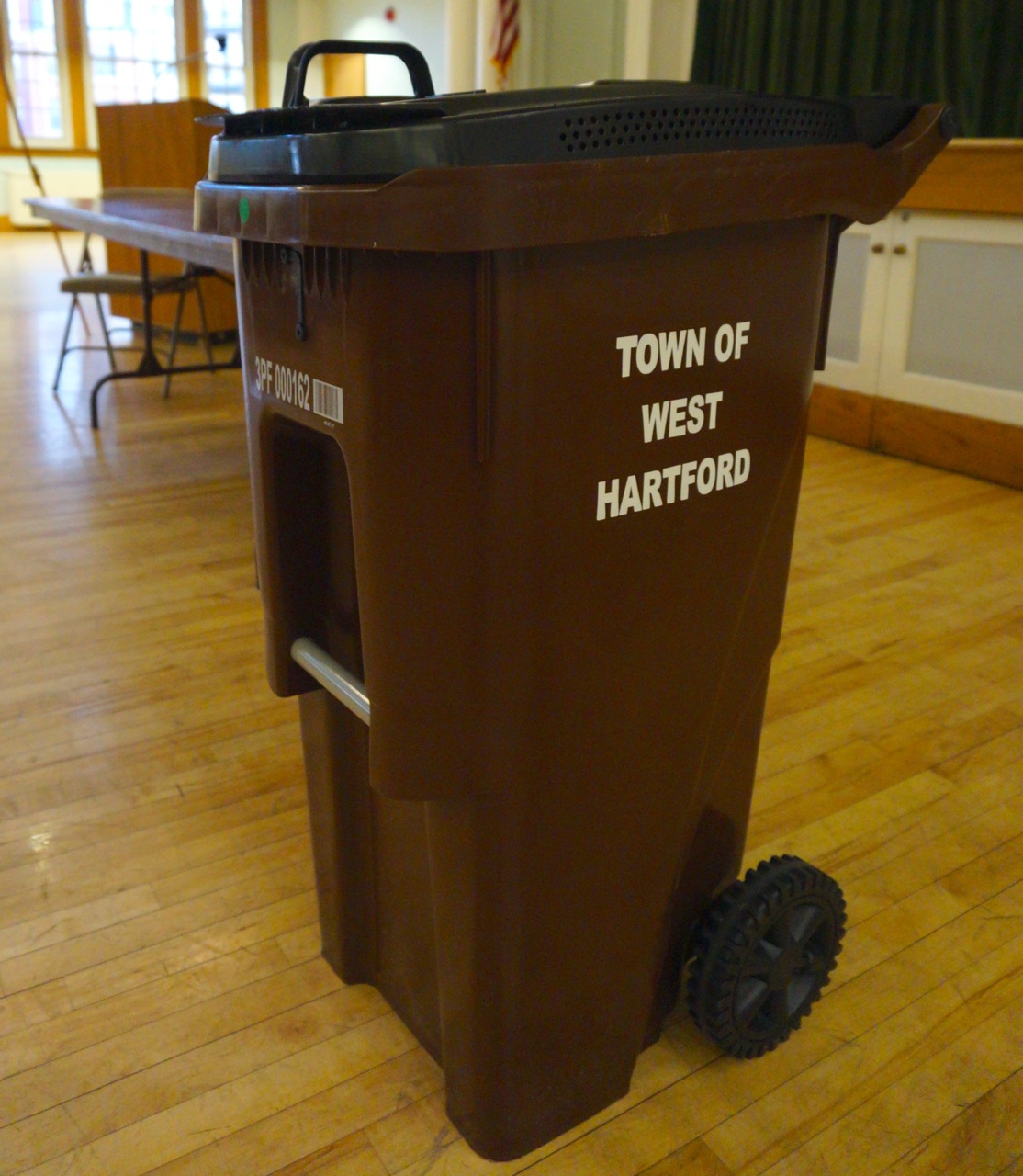
Participants in the food waste recycling test programs will place their 30-gallon brown bins at the curb on Thursdays for collection by Paine's. Photo credit: Ronni Newton
More than 100 West Hartford households will participate in a curbside food waste collection program beginning Oct. 5, 2017.
By Ronni Newton
Brown bins will join the usual green and blue bins lined up along the curb in front of the houses of 105 West Hartford residents beginning Thursday, Oct. 5, as the the town launches a three-month test of a curbside food waste pick-up program.
Director of Public Works John Phillips met with the participants on Monday night at Town Hall to provide additional information and answer questions about the program, which is being run in partnership with Quantum Biopower, Covanta, and Paine’s. The goal is to determine the household generation of food waste, he said.
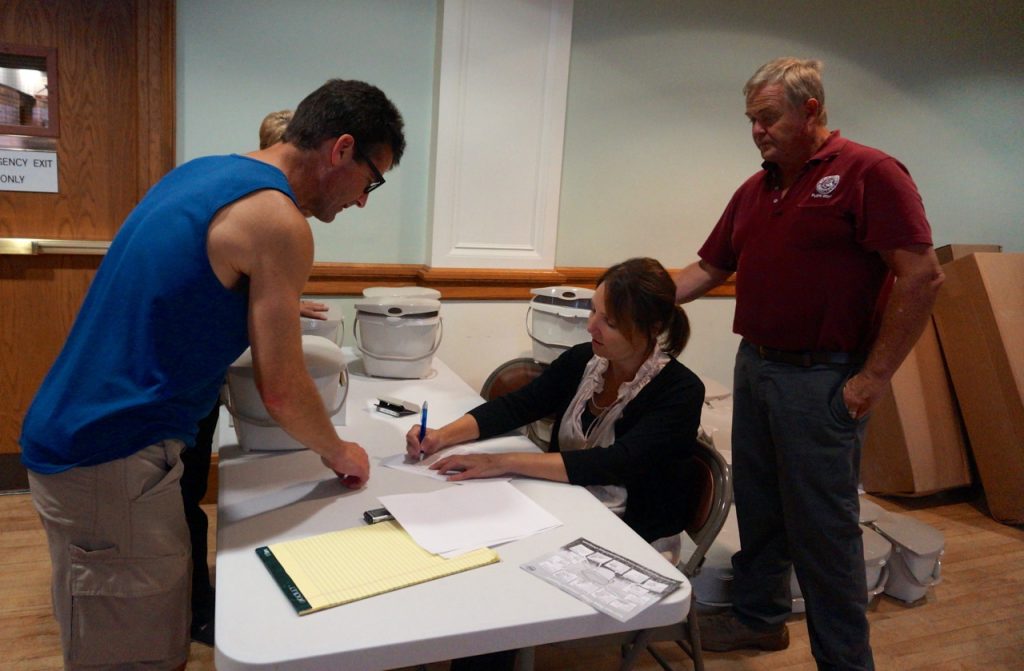
Resident Seth Oriol signs in at an information session for food waste recycling participants. Photo credit: Ronni Newton
The test is a “no-harm program,” Phillips said, that will not cost taxpayers anything. The test is being fully supported by the partnership companies.
All 105 participants have volunteered for the program, which was offered to residents in regular Thursday collection area who live on interior streets bordered by Fern Street, North/South Main Street, Sedgwick Road, and Mountain Road.
Phillips clearly articulated that this is only a test and not even a pilot. “Before this would be undertaken town-wide, conversation and more information would be needed,” he said.
The participants all received small odor-resistant off-white caddies, which can be placed on the counter or another location in the kitchen. The intent is for food waste – all food waste – to be placed in those receptacles rather than thrown into the trash or garbage disposal.
The caddies, which latch securely and are easy to clean and dishwasher safe, must be emptied into the 30-gallon brown bins which are then placed at the curb along with the trash and recycling bins before 6 a.m. on Thursday morning for collection. Paine’s will be sending a special truck to pick up the brown bins, which will be brought to Southington-based Quantum Biopower which uses “anaerobic digestion technology” to generate power.
While the countertop caddies are intended to be “bag-free,” Phillips said that participants can and should use a bag in the brown bin. While a compostable plastic bag would be ideal, any plastic bag is acceptable because the system allows for its removal as part of the recycling process.
The reason that the brown bin should be lined with a plastic bag, Phillips said, is “Because we live in New England, it will freeze. It will turn into a big sloppy mess.”
While that one bag in the brown bin is acceptable, Phillips asked participants to make sure only food waste ends up in the bin. “We want to minimize film plastics. The goal is zero percent contamination. Just your food, all your food,” Phillips said. Pre-consumed – like the parts of vegetables discarded when making a salad – as well as post-consumed food left on the plate should be recycled.
John Ferguson of Quantum, who also attended the meeting with participants, reiterated that only food should go into the bins. Even items like bio-degradable teabags should be left out. Yard waste cannot go into the bins either.
“All food – if you or an animal can eat it,” Ferguson said.
Coffee grounds, as well as leftover coffee and other liquids like milk, soda, or juice can and should be included. Oil and grease, bones, and shells are acceptable, too, said Ferguson.
Questions from participants included the size of the brown bin. It’s unlikely that one week’s worth of food waste recycling will fill the 30-gallon bin. “It’s a logistics thing,” Phillips said. It’s easier for the truck to pick up, or easier for manual disposal.” If the program goes into another phase, a different type of bin might be selected, he said.
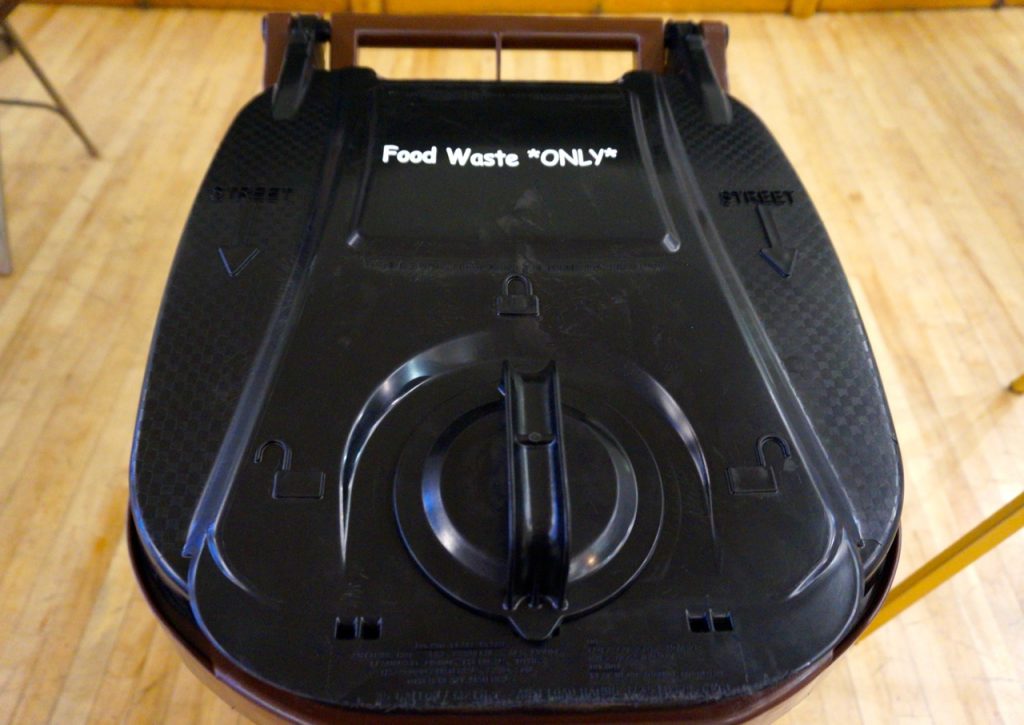
Gravity-release locking top on food waste bin. Photo credit: Ronni Newton
Phillips also noted that unlike the town’s existing trash and recycling bins, the food waste bin that is being used for the test program has a locking lid. Gravity automatically unlocks the lid when it’s turned at a certain angle to be dumped into the truck for disposal.
Although there may be odors, “the food is already in your waste,” Phillips said. The locks will make it tougher for bears or other animals to ravage through the bin.
The state’s goal is for 60 percent of waste to be diverted by 2024, and food waste, while not particularly large, is dense.
“Thirty-percent of all waste is organic in nature,” Phillips said. He is hopeful that this may ultimately be a way to reduce trash – and concurrently reduce tipping fees – as well as increase the town’s diversion rate.
“This test will help. This is a test of food diversion from the residential areas,” Phillips said. Of course because the participants have volunteered the participation rate is about 100 percent, but it will still provide valuable information about the weight of the food that is pulled out of the trash.
Joe Vitaile, representing Covanta, the town’s waste contractor, said that the goal of the program is to measure the volume “we can get from a great recycling community.” Greater diversion is the only way to achieve the state goals, he said.
“I think this is great. I think it’s an important program,” said West Hartford resident Judith Stahl, who volunteered as participant. She said that when she was growing up, her family composted on a regular basis and her 84-year-old mother still does it. “We need to figure out how to handle our waste more responsibly. I wish we could get to the point where the green bin is picked up only ever other week.”
The test period ends on Thursday, Jan. 5, 2018. What happens after that, “depends on the community will,” Phillips said. Ultimately, if organics recycling is adopted town-wide, it may mean that regular trash will only need to be picked up on a bi-weekly basis.
For participants who have developed new habits and want to continue organics recycling immediately after the test period ends, Blue Earth Compost, a local company that turns food waste into soil, can be hired for residential pick-up.
“There will be a lull after this test – which is not even really a pilot,” Phillips said. Whatever happens next will involve lawmakers.
More participants can be added to the test, and anyone interested who lives in the test area noted above can contact Public Works at 860-561-8100. Neighbors can also share in the use of each other’s brown bins, but need to let Public Works know so that they can properly track the results of the program.
Like what you see here? Click here to subscribe to We-Ha’s newsletter so you’ll always be in the know about what’s happening in West Hartford!
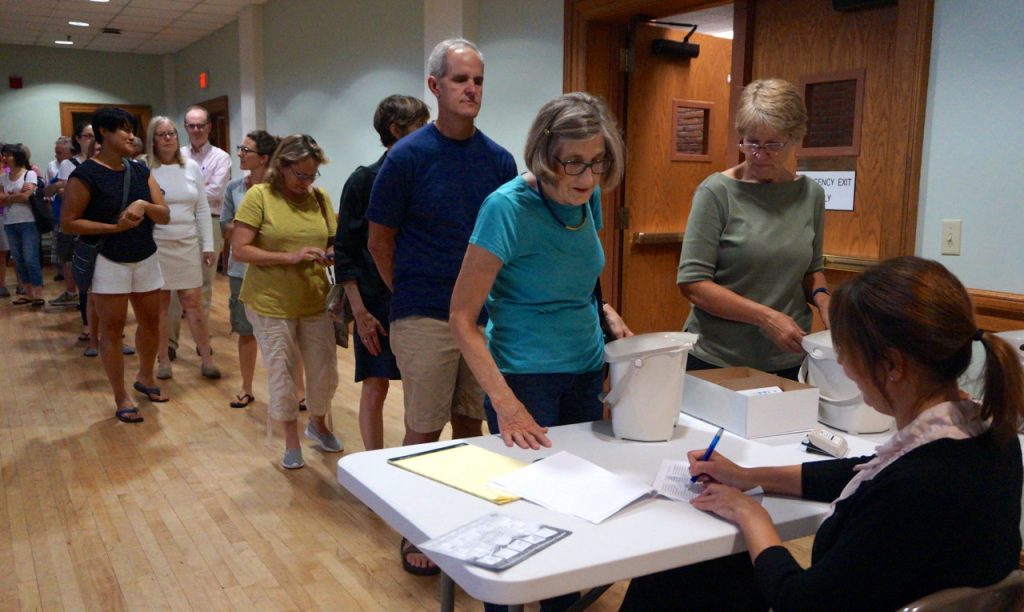
Participants line up to receive their countertop caddies for the food waste recycling program. Photo credit: Ronni Newton
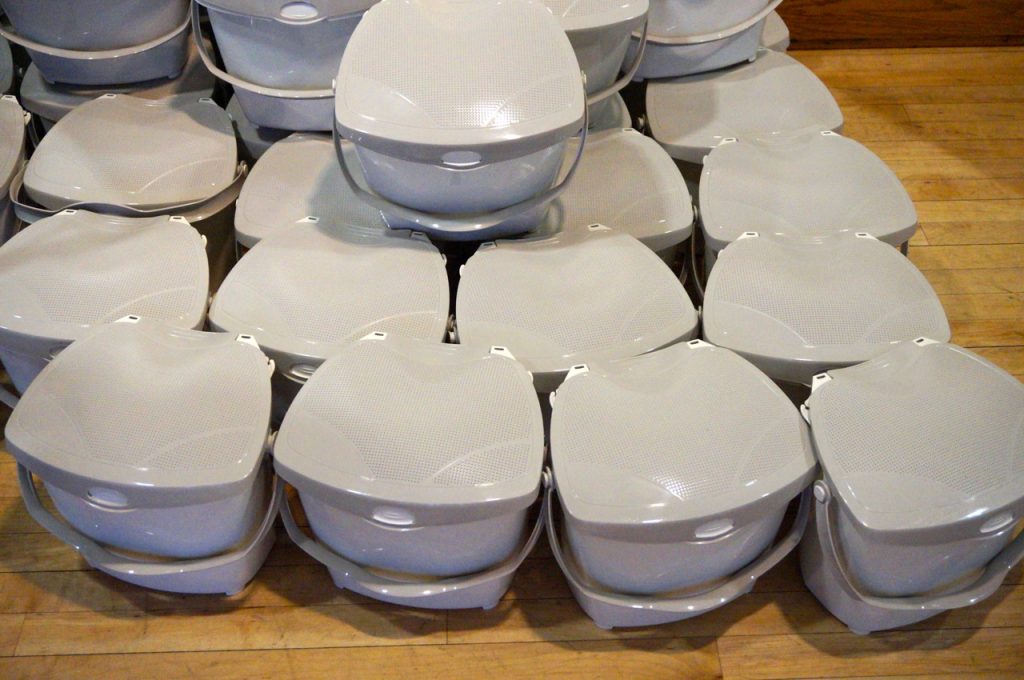
Food waste will initially be placed in countertop caddies that all participants received. Photo credit: Ronni Newton
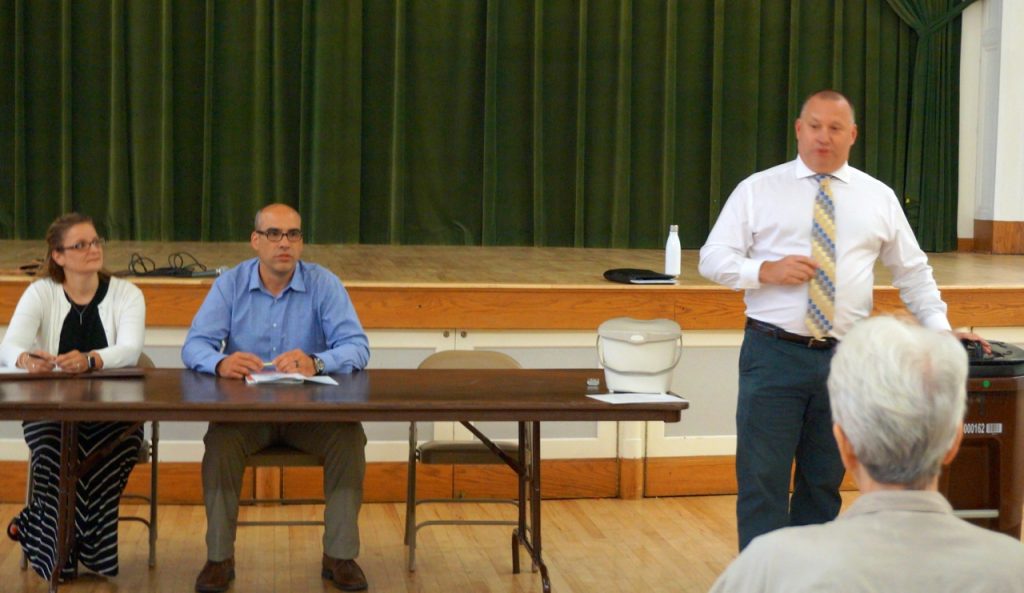
From left: Julie Paine of Paine’s, John Ferguson of Quantum Biopower, and Public Works Director John Phillips speak to participants in the food waste recycling test program. Photo credit: Ronni Newton
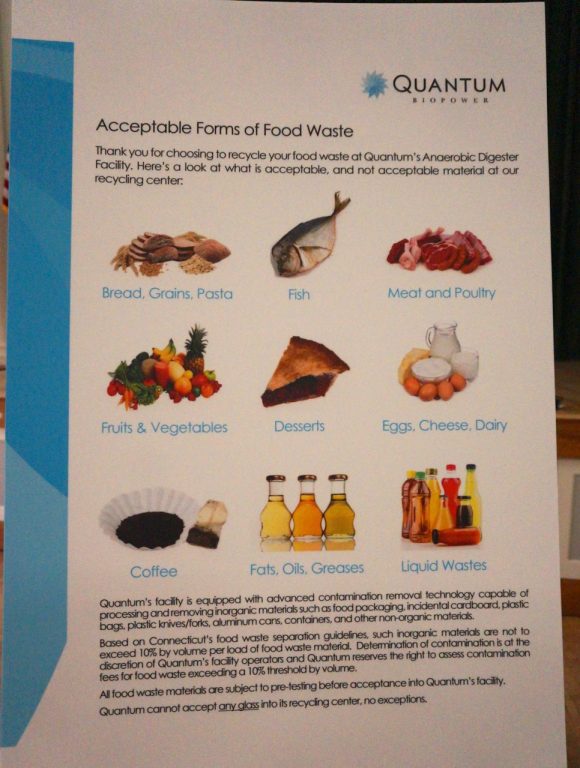
Information about acceptable food waste was handed out to participants. Photo credit: Ronni Newton


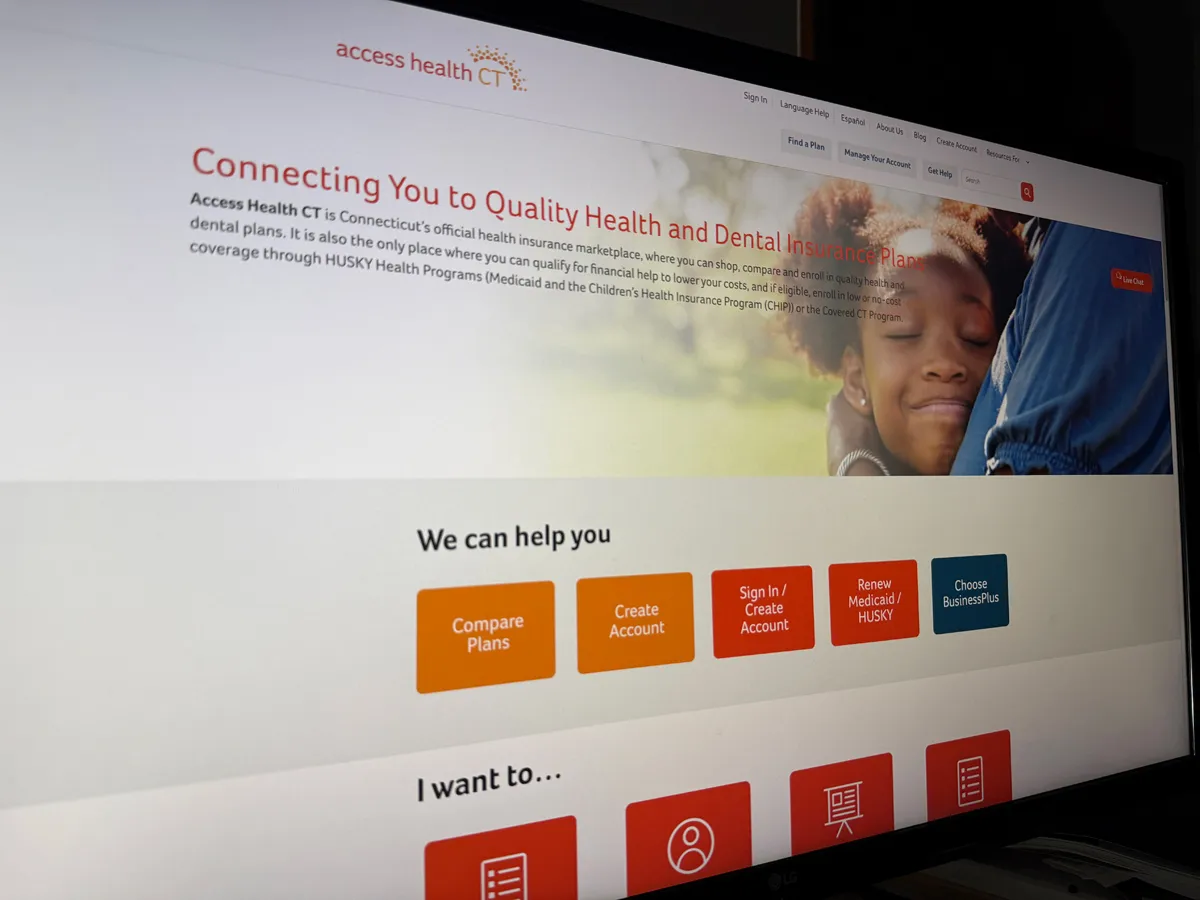
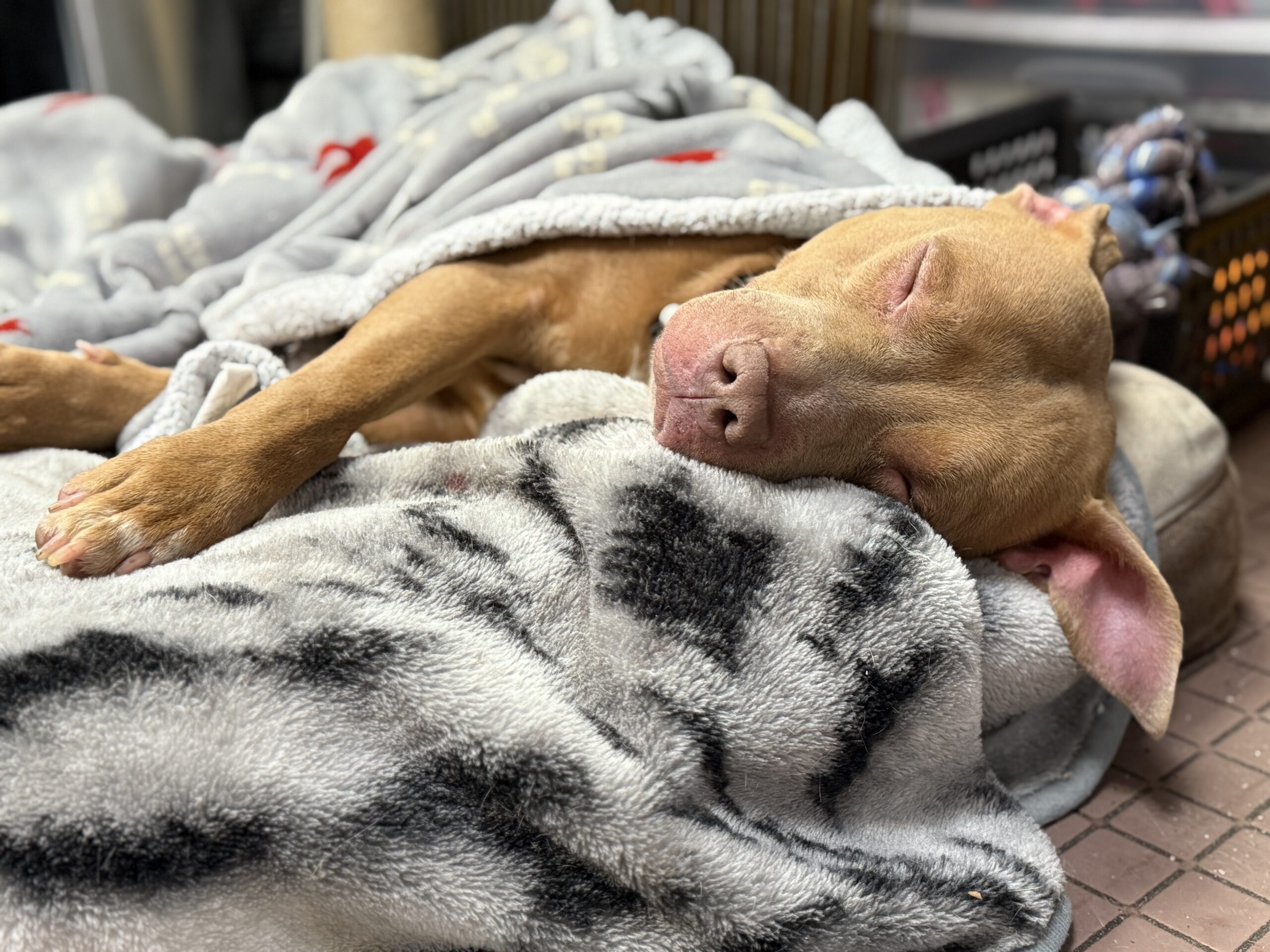
What a fabulous idea. I hope it goes town-wide!